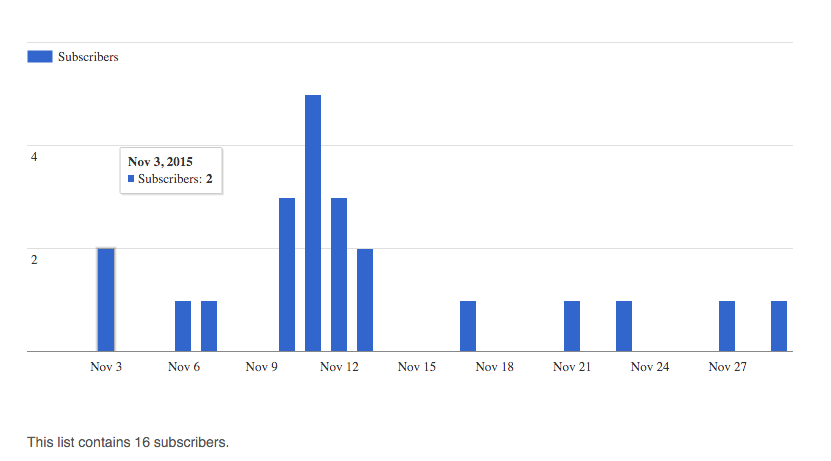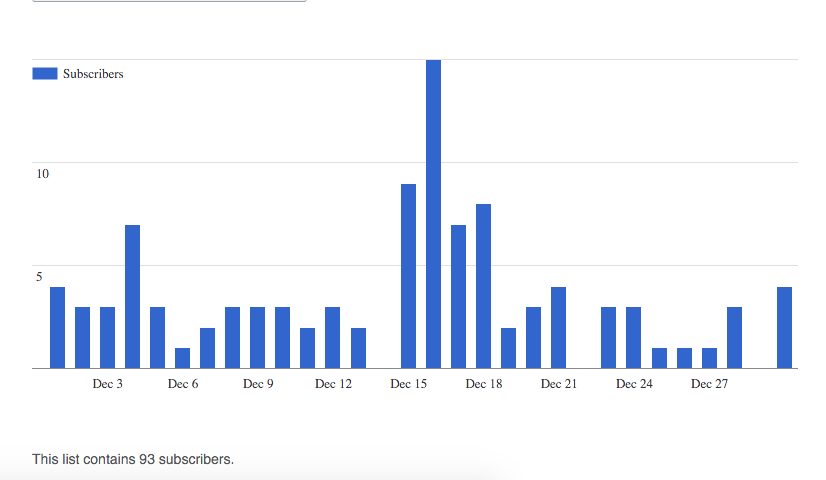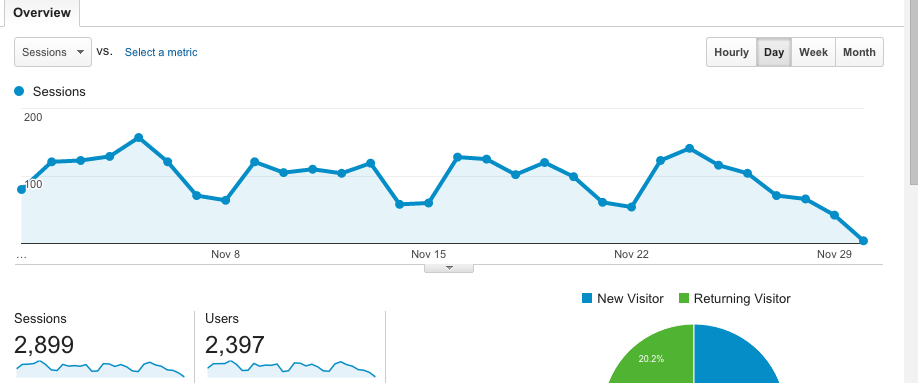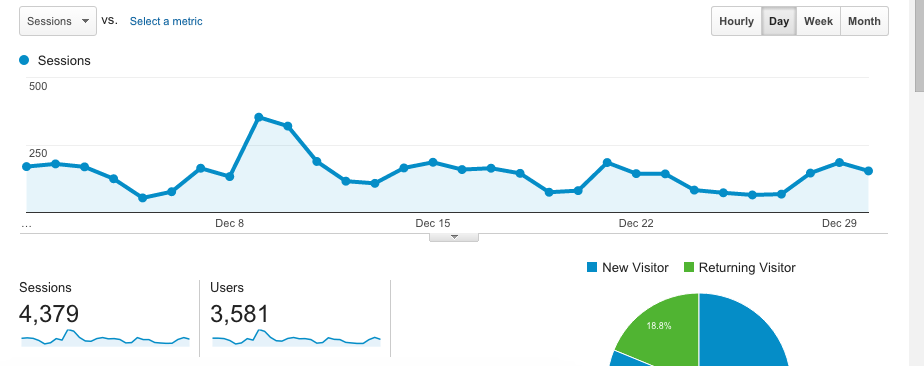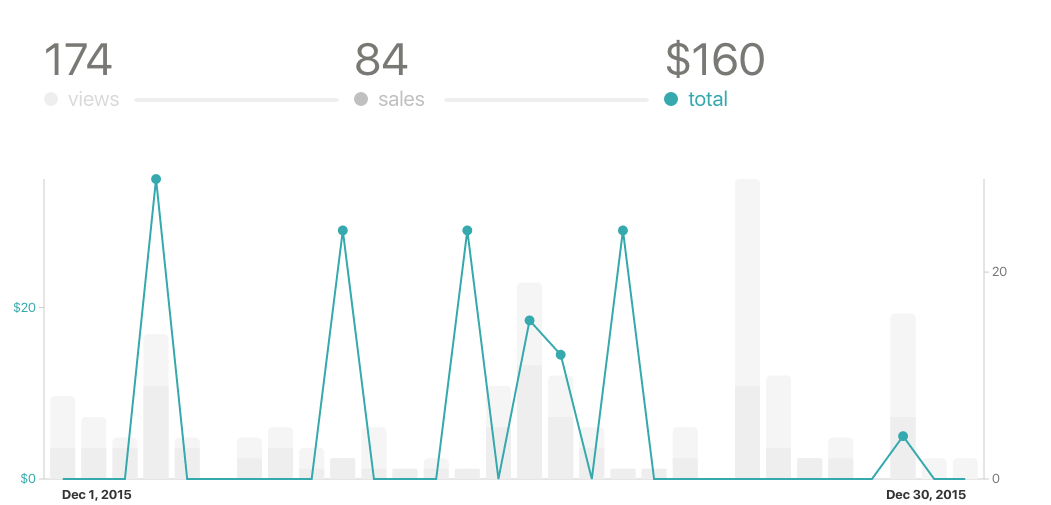Case Study : How I Increased Email Signups By 481%

In December of 2015, during a local Finish Day Event, I launched a new version of my site, GlennStovall.com. This case study is a breakdown of the rebuilding process, why I did, and the results I achieved.
I decided that publishing more content was going to be a larger part of my business in 2016. The problem was that I was managing the site on OctoPress, which was becoming cumbersome. That isn’t a slight against OctoPress but an acknowledgment that my writing and publishing process changed and that OctoPress was no longer a good fit.
What Did I Want To Achieve?
Here are the key metrics and goals I was using to measure the success of the project:
- Monthly email list subscribers. Having an audience makes everything easier. Having a list of people who you can reach out to and whom you can provide value, ask questions, or start conversations is a resource that can help you sell products & services, learn about potential opportunities, and build connections.
- Website Traffic. For people to subscribe, they need to be getting here in the first place. A well-optimized site would help bring people in via search engines and encourage them to stay.
- Email Conversion Rate What percentage of visitors join my email list? That number was a paltry 0.1% on my current site, which was something that needed to change.
- Product Sales When my consulting workload is full, and my pipeline is looking healthy, I focus more attention on selling some products such as Dependable, since I’m not in a position to sell any more of my time. I wanted to try to direct more traffic to my product as well.
Other Potential Side Benefits
In addition to outcomes I could measure, there were some other benefits I was hoping to achieve that I can’t pin down with hard numbers.
- Wider Range of Tools. WordPress has a huge community and thousands of plugins and themes available. The options for what I could do with a WordPress site compared to a site built with a static site generator were staggering.
- Hopefully More Content. Emacs is great, but it’s not as great for writing long-form content as it is for writing Ruby scripts. WordPress makes getting content out a lot easier, and by removing or sanding down the roadblocks in my way, I’m hoping I could publish more and better content in the coming year.
- Easier Delegation. It’s much easier to find assistants of both the personal and virtual variety that are familiar with or can quickly learn how to use a WordPress admin panel. The same is not true for Git and Markdown.
Setting Up The New Site
Just because you can doesn’t mean that you should.
Between taking care of my clients, writing & publishing, and having a life, I’m not looking for ways to add more tasks and responsibility to my plate. Even though I know a few things about managing WordPress installs, customizing themes, and writing custom plugins, I didn’t want to do any of that for my site.
Any part of the process I could automate, or do with off-the-shelf components, I did. I set up hosting on Flywheel (affiliate link). They have managed WordPress hosting, so I don’t have to spend time worrying about updates, performance, or security. Flywheel costs $15/month, a bit more than other hosting providers. The built-in management makes the extra monthly cost worth it.
For the look of the site, I found a set of conversion based themes and plugins over at Thrive Themes. They are simple to use and aimed at the goal of conversions, both of which are things I appreciated. I settled on the Squared theme and installed it.
Other Tools and Plugins
The main pain point I wanted to solve was setting up different opt-ins for articles, and offering a variety of files for download. I struggled with off-the-shelf solutions and using tools like LeadPages and Drip. Then I talked to Brian Casel about a plugin he was working on at Audience Ops called “Content Upgrades” that did exactly what I wanted. Using content upgrades has been huge (See stats below).
I’ve also started using Gravity Forms and have some more plans for that in the future. Eventually, in addition to publishing content, I aim to use my site as a way to perform surveys, as well as streamline and automate my client onboarding process.
Auditing My Content
I set up the last iteration of my site in 2012. I had written a lot of content between now and then, and a lot of it was … sub-par. My content writing is also a bit all over the place.
I deleted articles that didn’t generate traffic or that I found embarrassing. I sorted the rest into a few different resource piles: Technical Marketing, Business of Software, Freelancing, and Developer Tutorials. I also cleaned up some content and add some additional calls to action on older posts.
Setting a Deadline
For digital agencies, working on your website is often an example of the “Cobbler’s Son Syndrome”: A cobbler is so busy servicing everyone else, that he doesn’t make time to take care of himself or his family. In the same way, we get so caught up with client services that we don’t always take care of ourselves.
This problem happens because the work is important, but not urgent. More important work and work with time constraints closer to the present will always take priority. One way I sought to overcome this was first by getting the site set up quickly. The content migration was pretty mindless work. So I did it in the margins of my time, towards the end of my day when I was exhausted or when I was sitting at home on the couch watching Jane the Virgin on Netflix.
This strategy worked for a while until it got to the harder parts at the end. At points like this in a project, you have to set a deadline and hold yourself accountable to give the work urgency. Otherwise, it won’t get done. Getting others involved can help increase accountability. Lucky for me, the local finish day gave me both of these things, and I was able to get the site launched!
So Then What Happened?
I wanted to measure the results of the project, so here’s the methodology of running a sort-of split test with 30-day windows. I compared November 1st – November 30th to December 1st – December 30th. For these 30 day windows, I examined email subscribers, total traffic, email conversion rate, and product revenue.
This study isn’t perfect science, as things like the holidays throw it out. However, looking at the data below leaves no doubt in my mind the project was a success. Let’s look at the numbers:
Email List Subscribers:
Result: 481% Increase.
Website Traffic:
Result: 51% increase
Email Conversion Rate:
(sorry I didn’t have graphs for this one.)
November 2015: 0.5%
December 2015: 2.1%
Result: 320% increase
Product Revenue:
November 2015: $0 (I did have a graph for this one, but what’s the point?)
(note: most of these “sales” are downloads from the freelance pricing handbooks ‘pay what you want’ page. Most people want to pay $0.)
Result: $160 increase.
Conclusion
Overall, the product was a resounding success. I’m happy with all of the results, and finally, feel my website is an asset that I use to help me move my business forward in 2016.
